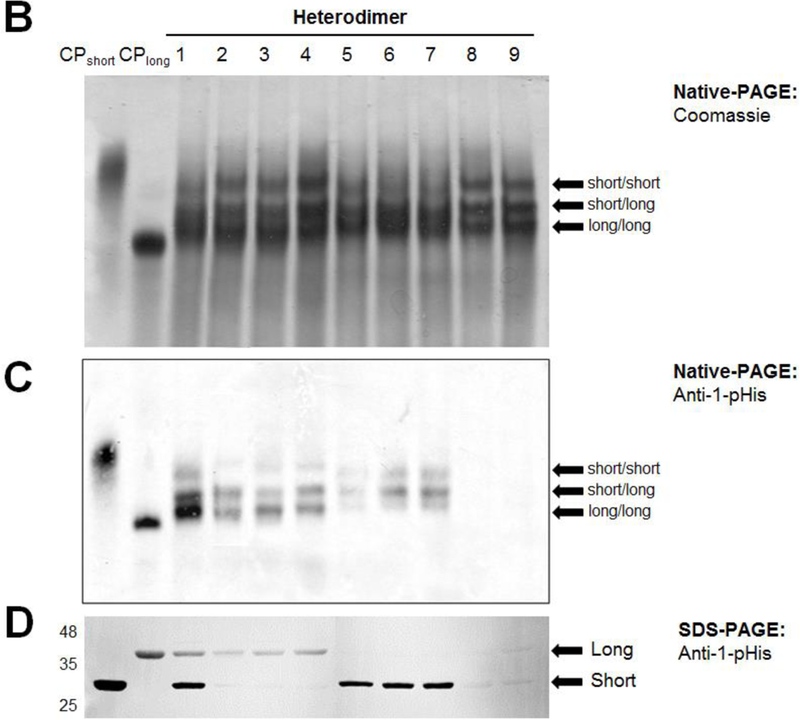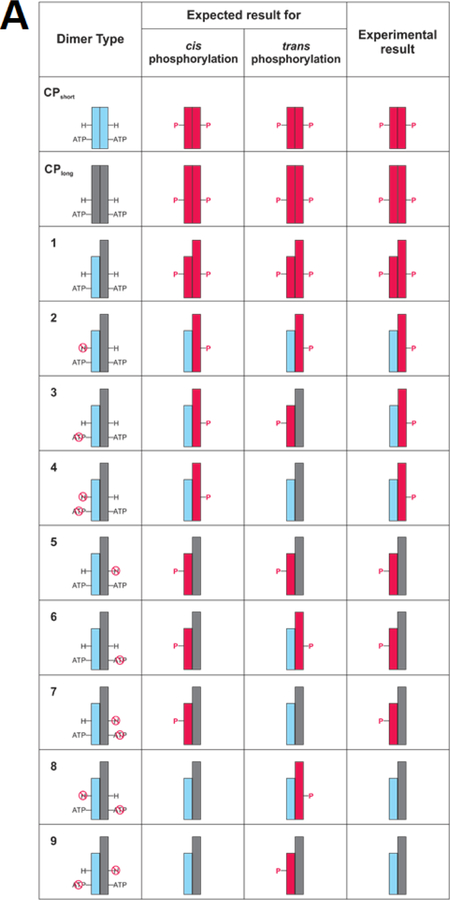Figure 5.

CusScp autophosphorylates using a cis mechanism. (A) Cartoons of the expected and experimental results of autophosphorylation studies with homodimers and heterodimers of CusScp. The first column identifies wild-type CusScp-short homodimers (CPshort), wild-type CusScp-long (CPlong), and total of nine different heterodimers numbered 1–9, which are either of wild-type or carrying mutations with disrupted phosphoacceptor His or ATP binding (indicated by a red circle crossed with a line). CusScp-short is represented by blue rectangles and CusScp-long is represented by gray rectangles. Phosphorylated CusScp is shown in red rectangles and labeled with a P. The second and third columns depict the expected phosphorylation pattern for cis and trans phosphorylation, respectively. The last column summarizes the phosphorylation patterns observed in our experiments. (B) Native-PAGE analysis of the homodimers and heterodimers revealed by Coomassie staining. (C) Autophosphorylation analysis by native-PAGE followed by Western blotting using an anti-1-pHis antibody. (D) Autophosphorylation analysis by SDS-PAGE followed by Western blotting using an anti-1-pHis antibody. Labels short/short, short/long, and long/long were used on the native-PAGE analyses to identify the homodimer or heterodimer. For SDS-PAGE, short and long were used to identify each subunit.

